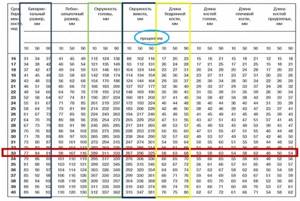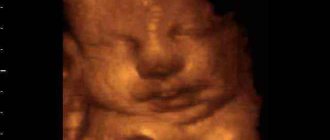Photo: UGC Week 15 of pregnancy means that the second trimester already arrived. In expectant mothers, you can notice a small tummy and rounded shapes. How this period go for a woman? How develop ? Answers to pressing questions are in the article.
Attention! The material is for informational purposes only. You should not resort to the treatment methods described herein without first consulting your doctor.
Interesting Facts
| Options | Indications |
| Time from conception | 13 weeks |
| Period by month | 15 weeks |
| What month | 4 |
| Dimensions and weight of the fetus | 100-120 mm, 50-70 g |
| Uterus dimensions | Protrudes from the womb |
Your baby is the size of
Orange
100-120mm Size
50-70 g Weight
The 15th obstetric week of pregnancy, or the 13th if you count from conception, is a time of relative calm for the expectant mother, who has already gotten used to her new position. She no longer suffers from constant nausea and fatigue. In the second trimester, a lot of strength and energy appears. The baby continues to grow and develop, and very soon the woman will even be able to feel his movements.
What examinations need to be done at week 15
At 15 weeks, many women already undergo a test called second trimester screening, which includes fetal ultrasound and biochemical blood tests. Ultrasound is aimed primarily at assessing the condition of the uterus, identifying any abnormalities in its mucosa (for example, in the presence of fibroids). It also allows the expectant mother to see her child and determine its gender, if this has not been done previously.
A blood test is performed to determine the level of progesterone and hCG in a woman’s body. In the middle of the 2nd trimester, hCG levels begin to decline. High levels indicate the presence of some pathology.
Additional examinations at the 15-week period include an examination by a gynecologist - scheduled or unscheduled. If you suspect an infection, you must take a smear.
Feelings of the expectant mother
By week 15, pregnant women typically gain 2 to 5 kg in weight. If this is your first pregnancy, your belly is still barely noticeable. With each subsequent pregnancy it grows faster.
Against the background of hormonal changes and increased blood flow, bleeding gums and nasal congestion occur at week 15. Do not use vasoconstrictor drugs without a doctor's prescription, they are addictive. Rinsing with water-salt solutions and maintaining sufficient air humidity in the room will help against a runny nose during pregnancy, especially during the heating season.
To prevent diseases of the gums and teeth, visit the dentist: the 15th week of pregnancy is the optimal time for dental treatment.
Digestion
The uterus continues to grow and takes up more and more space in the abdominal cavity. Constipation may occur due to pressure on the intestines. A diet rich in fiber, sufficient fluid intake and physical activity will help you cope with them.
Breast
The mammary glands prepare for lactation throughout gestation. Already at 15 weeks, some begin to experience colostrum: a woman may notice whitish or transparent droplets of liquid coming out of the nipple.
Back pain
Physiological pain in the lower back is associated with the pressure of the growing uterus on the nerve endings. Change your body position more often, take breaks, if your job is sedentary, do gymnastics. If recommended by a doctor, you can use a bandage.
Beauty and accessories
Is it possible to dye your hair during pregnancy? This question is asked by many pregnant women. After all, you really want to look beautiful and well-groomed! And if we are talking about a possible visit to a photo studio, then even more so. Recent studies do not allow us to say unequivocally about the negative impact of the dyeing process on the health of the fetus. In any case, we should not forget that the chemicals invariably contained in hair dyes can now cause severe allergies. This is despite the fact that you could previously use them without problems. Highlighting and coloring are more suitable for a pregnant woman - they do not affect the hair roots. Choose natural dyes (chamomile decoction, henna, basma, oak bark) or light tint balms.
What happens to the fetus
At 15 weeks of pregnancy, brain structures are actively forming. The rudiments of convolutions appear, nerve cells continue dividing and begin to coordinate the child’s actions.
The musculoskeletal system is formed, which requires calcium. Take this into account when planning your diet. A lack of calcium leads to the loss of teeth in the mother, makes her bones more fragile, and disrupts the development of the fetus. The size of the fetus at week 15 is on average 10-12 cm from crown to tailbone, weight is 50-70 grams.
Other achievements of the baby by 15 weeks
- His eyes are still closed, but he can already feel the light from outside. He hears well and responds to his mother's voice.
- Swallows amniotic fluid and can distinguish the taste of the dish you had for lunch today.
- At this stage, it is already possible to determine the blood type and Rh factor of the unborn child.
- The baby's movements are still erratic, but many women already feel his movements at 15 weeks, especially if this is not the first pregnancy.
How you feel
During the 15th – 16th week of pregnancy, the uterus grows and stretches the muscles and ligaments in the lower abdomen, which is why you may feel minor pain. Now the uterus has grown so much that it can already be felt: to do this, empty your bladder, lie on your back and relax. Now try using your fingertips to gently explore the area in the middle of your abdomen, just above your pelvic bone. The protruding area is your unborn child. If nothing works and you cannot feel the uterus, ask your doctor to teach you how to do it correctly.
At the 16th week of pregnancy, due to compression of the intestines, problems with going to the toilet “in a big way” may appear. If we were talking only about discomfort, it would not be so scary, but prolonged constipation can increase the risk of miscarriage. Therefore, it is imperative to review your diet and include foods that have a laxative effect. To prevent problems with peristalsis in the 15th – 16th week of pregnancy, it is advisable to do simple physical exercises every day and walk in the fresh air, and it’s also a good idea to visit the pool.
Your breasts continue to enlarge and your areolas become even larger and darker. The hormonal surge has ended and your appetite has increased. However, you must try not to overeat and constantly monitor your body weight. Normal weekly weight gain ranges from 300 to 500 g.
And at the stage of 15 - 16 weeks of pregnancy, your temperature may increase by 1 - 2 degrees. There is no need to worry: the body “overheats” due to intense work, and with the help of increased sweating and a feeling of heat, the body cools itself. The amount of vaginal discharge may also increase. Increased secretion is a kind of preparation of the genital tract for childbirth.
In general, the 16th week of pregnancy is a period when a woman’s emotional state normalizes and her energy returns. A thirst for vigorous activity appears: you want to start renovations, large-scale shopping, or even moving. But the expectant mother should be careful - not to lift weights and not to overwork, because this can negatively affect the health of her baby.
Tests and ultrasound
At this time, you will only have a scheduled visit to the gynecologist, where the doctor will measure your blood pressure, weight and abdominal circumference. The gynecologist palpates the uterus through the anterior abdominal wall to determine its location relative to the navel. The specialist will also listen to the fetal heartbeat.
If you are 15 weeks pregnant, you can find out the sex of the baby using an ultrasound: the baby’s genitals are fully formed and are clearly visualized. However, at this time, the study is not prescribed only for this purpose. Indications for it are various violations and suspicion of a threat of interruption. Wait just a little, during the 2nd ultrasound during pregnancy, everything secret will become clear.
Is it worthwhile to engage in aesthetic education of the unborn baby at 15 weeks?
Listening to pleasant music, reading books or just having quiet conversations is extremely beneficial for a child's development.
“After all, you become a mother from the very moment of conception, so in my understanding, all the good things that you can demonstrate to your baby - classical music, contemplation of beauty - will help him become a harmonious, calm and full-fledged person,” our expert is convinced. “Therefore, dear expectant mothers, please receive positive emotions during pregnancy, this is very important.”
It is also important to note that at this stage the baby begins to distinguish voices, so doctors recommend not only the expectant mother, but also the father, to start talking to the child. This contributes to the formation of a favorable psycho-emotional connection.
Possible complications
A common complaint from patients is tone at 15 weeks of pregnancy. The woman feels pain in the lower abdomen and lower back, as if everything is turning to stone. The tension persists continuously for several minutes. The tone differs from physiological spasms caused by stretching of the ligamentous apparatus by greater intensity, sometimes accompanied by slight brown vaginal discharge.
It occurs as a result of stressful situations, hormonal disorders, diabetes, hyperfunction of the thyroid gland, adhesions in the pelvis, magnesium deficiency, multiple pregnancies and many other reasons. Therefore, treatment is prescribed individually, sometimes requiring a hospital stay.
What to do if your temperature rises
If in the early stages an acute respiratory viral infection with fever could have a detrimental effect on the development of the embryo, then at week 15 the fetus already has its own immune system. A mother's temperature up to 38.5 will not harm the baby. Use an antipyretic as recommended by your doctor. Bed rest and drinking plenty of fluids will help you recover faster.
How high is the risk of a frozen pregnancy or miscarriage at this stage?
The risk of a frozen pregnancy at 15 weeks is significantly reduced, but the risk of miscarriage remains at any stage depending on the woman’s physical condition, pregnancy complications, as well as the history of previous pregnancies and births in the past, so everything here is quite individual, our expert believes.
Hypertension in the expectant mother can have an adverse effect on pregnancy. In addition, the risk of miscarriage increases significantly if you have diabetes mellitus, or if a woman has suffered a severe viral or bacterial infection and was not treated before pregnancy.
Checklist for 15 weeks of pregnancy
- Get used to sleeping on your side: lying on your back is not recommended for pregnant women, because in this case the uterus puts pressure on important blood vessels, which can cause the baby to lack oxygen and nutrients.
- Now is the best time to go to the dentist. Do not be afraid of pain, modern painkillers are safe for the unborn child.
- Periodic dizziness and weakness at week 15 are associated with a decrease in blood sugar. Carry a snack with you, choose fruits and slow-digesting grains. Fast carbohydrates in the form of confectionery products can be included in your diet, but should not be its basis and a frequent snack.
- Walk for 20-30 minutes every day: being in the fresh air and moderate physical activity has a beneficial effect on the circulatory system of the mother and fetus.
- There is no need to deal with pigment spots that occur during pregnancy. Whitening creams may not be safe during pregnancy. Pigmentation will disappear without a trace after childbirth.
The fifteenth week of pregnancy is the best time to start attending pregnancy courses. We invite you to classes at the Women's Medical Center. You will learn a lot of interesting things about how pregnancy proceeds, how to help yourself during childbirth, how to care for a newborn. You will communicate with like-minded people and get a lot of pleasant emotions.
And again - about proper nutrition during pregnancy
Recommendations regarding nutrition for a period of 15 weeks are not particularly new, but it is still worth recalling that expectant mothers are often characterized by some changes in taste preferences - for example, an uncontrollable craving for salty foods or a desire to definitely eat chalk. This is a temporary phenomenon, so you should treat it calmly, focusing on following the basic principles of a healthy, balanced diet. Thus, the basis of the diet should be protein, fats, complex carbohydrates and fiber, while fast carbohydrates, smoked meats, marinades and, of course, fast food in any of its “incarnations” should be avoided.
Fetal growth restriction, the fetus does not gain weight, what to expect? Part 2

In one of the previous articles we discussed the topic of fetal growth restriction. We got acquainted with some competent terms and came to the conclusion that the diagnosis is made on the basis of ultrasound parameters when certain indicators are less than normal.
In this article we will look at the norms for fetal size, what are they?
Each doctor who performs ultrasound during pregnancy has a special table (it can be in paper or electronic form), which indicates the parameters, weeks of gestation, and percentiles: namely the 10th percentile, 50th percentile and 90th percentile percentile. Percentile is a statistical indicator. The number of percentiles can vary, as well as the number of parameters. It is important to understand that the fetus grows not according to the textbook, but according to its own genetic program, and the tasks of the obstetrician-gynecologist and the ultrasound doctor are to be understood in dynamics: is the baby’s individual peculiarity of such intrauterine growth or, indeed, is he stunted in growth due to placental insufficiency. There are a number of developmental defects and chromosomal diseases due to which the fetus is stunted, but then the doctor will suspect this on an ultrasound and send it for further examination.

So, an example of a table of indicators of intrauterine fetal dimensions. Let's take the example of 33 weeks of pregnancy. This line is highlighted in red. Percentiles indicate the relative position of an individual in the standardization sample. These are some average statistical indicators that help, first of all, doctors navigate between normality and pathology. If your gestational age is 33 weeks, and all indicators of fetometry (sizes of different parts of the fetal body) fit into this line, highlighted in red, then there is no cause for alarm. “According to the textbook,” it is the 50th percentile (the most common indicator of the norm in the population). But the fruit may be larger or smaller. Remember how at school age you lined up in physical education lessons, some were taller, some were shorter, but all of them turned out to be good guys. The logic is the same in percentiles, some are larger (then the doctor will say the phrase: the biparietal size corresponds to the 90th percentile for a gestational age of 33 weeks), some are smaller (then the doctor will say the phrase: the size of the femur corresponds to the 10th percentile for a gestational age of 33 weeks) . Both are normal options and there is no cause for alarm.
As in the previous article on fetal growth retardation, we will repeat the main fetometric indicators that are used to guide the assessment of fetal intrauterine growth: biparietal size, head circumference, abdominal circumference, femur length. These indicators are highlighted in the table with multi-colored columns. The estimated fetal weight is calculated using a mathematical formula that is based on these indicators.
In this article, we tried to get acquainted with the principles of assessing intrauterine fetal growth, saw the percentiles and their spread. If you are diagnosed with fetal growth restriction, consult your doctor for this sign to find out if this is true, your doctor for an ultrasound. And remember, your baby is individual, the best and most beautiful, let him also grow individually in utero, according to his genetic program.
Obstetrician-gynecologists
and ultrasound doctors at the FAMILY CLINIC are ready to answer all questions about fetal development and the course of pregnancy, as well as take over the management of your pregnancy so that you have a healthy baby.









